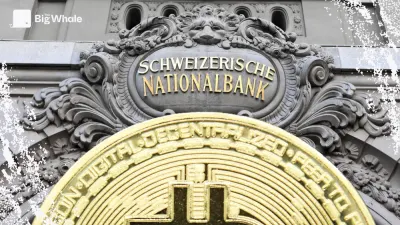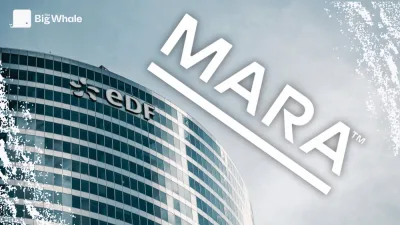TBW - Cassie Craddock (Ripple Europe): "We want to provide an end-to-end infrastructure for financial institutions".
"We want to provide an end-to-end infrastructure for financial institutions".

The Big Whale: Ripple is one of the oldest companies in the sector. Where are you today?
Interviewee: Ripple was launched in 2012, focusing on a well-identified problem: cross-border payments. Going through the traditional financial system is very slow and remains so today - in some countries, it's still faster to transport money physically than to make digital transactions, so Ripple was created to address this problem.
Do you consider that you've succeeded?
There's still a long way to go, but we've made things better. To date, we have processed more than $70 billion in transactions.
The Big Whale: The XRP blockchain and Ripple are often confused. Can you explain the difference?
XRP is the native token of the XRP blockchain. The three founders donated a large amount of XRP to Ripple to create a for-profit company in 2012.
Today, Ripple operates in 90 countries. We're expanding globally, with payment institution licences in the US, the UAE, and we're working on it for Europe. But that's not all we do.
Since I joined in 2017, I've seen Ripple evolve from a cross-border payments business using token XRP to a digital asset infrastructure provider.
We have become a trusted partner by developing complete solutions - payment networks, platform relationships, liquidity and compliance.
Our competitors range from exchange platforms to custodians and payment companies. Major institutions such as Société Générale Forge and HSBC choose us for our expertise and compliance-focused approach.
How do you actually work with financial institutions?
We are not a consultancy, but we provide bespoke financial services. Our role is to help companies identify their needs and provide solutions using our products. We support them in developing use cases for tokenisation, payment, staking, lending and borrowing.
How do you maintain your competitiveness against specialist companies?
Custody of digital assets is the entry point for financial institutions, which need secure storage of digital assets. This is the foundation and precisely why we acquired Metaco in 2023 for $250 million.
Metaco, which became Ripple Custody, is used by many financial institutions such as Société Générale Forge and HSBC. Financial institutions can develop their own applications or work with us from custody through to token issuance. It is thanks to this wide range of services that we are able to remain competitive.
We are seeing growing demand in France, Spain, Italy and Switzerland as banks accelerate on digital asset service offerings.
You have also launched a stablecoin, the RLUSD. What is it used for? Where is it available?
Interviewee: Our stablecoin is based on the US dollar. We initially launched a version on the US dollar because it's clearly the biggest market. But we're obviously looking at the opportunities there are to launch a stablecoin in euros and sterling.
What is your vision for the stablecoin market?
The stablecoin market is currently worth $200 billion and is expected to reach $3 trillion by the end of the decade. We entered this space with a compliance-focused approach, obtaining a license from the New York State Department of Financial Services (NYDFS).
Our stablecoin wasn't launched just to compete with Circle or Tether - it was in response to customer demand for our cross-border payment product.
What future for XRP in this context?
XRP is essential to use the XRP blockchain - every transaction requires it. The choice between XRP and stablecoins depends on the specific use case and what developers are building. Sometimes XRP is more appropriate, other times it's our stablecoin.
Regardless of Ripple's success, XRP will continue to exist on its own. Other developers are building on the XRP blockchain, primarily for financial use cases, but we see this expanding beyond finance.
You're leading Ripple in Europe, what's your strategy?
For two years and our trials in the US, we've focused on expanding outside the US, and particularly in Europe. We now have around 200 employees in the UK, London, Geneva, Iceland and Ireland.
How has Trump's election impacted Ripple's European strategy?
We will continue to invest in Europe. The region is showing strong growth potential. Although MiCA regulation presents challenges, it is more favourable than in other regions and provides a clear incentive for financial institutions to enter.
In the UK, we are working with the government to create equivalent regulatory frameworks. Although San Francisco remains our headquarters with the majority of staff, we want to remain very engaged in regions where the regulatory framework is clear.
What projects are you working on in terms of tokenisation?
We have partnered with Archax to tokenise money market funds with Aberdeen on XRP Ledger. Société Générale Forge uses our custody solution for their Euro CV.
We are also working with Ondo Finance on the tokenisation of US Treasuries. The big banks are mainly focused on institutional/retail offerings and tokenisation use cases.
Where do you see Ripple in five years?
We want to provide an end-to-end infrastructure for financial institutions. We want to see widespread adoption of tokenisation, stablecoin and payment use cases.



